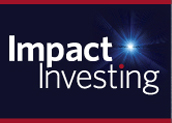Then there are physical constraints causing inertia. If there is a lack of supply of appropriate instruments to be invested in, how can impact investing grow and flourish? The uncertainty regarding product supply makes it difficult for potential demand pools to be created in the first place, let alone be satisfied. With a strategy such as ours, this uncertainty was removed as the World Bank committed to providing a steady supply of scalable bonds to help support the initiative. Their foresight has led other issuers to offer similar structures to the market, which in time hopefully will alleviate this supply obstacle. Our estimates now point to the environmental bond space growing to approximately $15 billion to $20 billion. This type of development is positive, but needs to be replicated many times over.
With impact investing a comparatively new concept, in its nascent period, it is only to be expected to face resistance and inertia.
Skepticism and a general lack of understanding are a second obstacle to change. We ourselves have encountered doubts as to whether mainstream financial returns are achievable, together with the broader impact objective. This doubt manifests itself in different guises, from the high network advisor who stated that “investment is separate from philanthropy” to the pension trustee who feels his or her fiduciary responsibilities may be compromised. This skepticism is legitimate, and until disproved institutions and individuals entrusted with the wealth of others must tread carefully. Skepticism combined with prudence are a powerful combination.
Finally, the impact investing community needs to be more adept at bringing mainstream investors on board. Making exaggerated claims about superior performance over the long term are detrimental if not proven. Another area where the impact community may unintentionally hinder growth is by trying to create metrics that measure the magnitude of impact. I believe if this is pursued too rigorously, it will deter instruments and issues being created in the first place and strangle the industry at birth. This is not to suggest that metrics should not be applied or developed, on the contrary! I just believe there needs to be common sense in their application. There will be occasions when the precise impact cannot be calculated but that should not deter or prevent the investment occurring. The sector should not be too puritanical – it should apply common sense. This, to a degree, is what happens with World Bank Green Bonds, when, for example, a project is identified that is likely to result in a substantial reduction in carbon emissions. Often it is impossible to calculate a precise estimate for how much emission tonnage will be reduced. However, we do know that identified projects will have a significant impact.
Another "own goal" inflicted by the community on itself is the development of Social Impact Bonds (SIBs), which are effectively hybrid instruments that normally pay suboptimal market returns. The issuance is usually based on the premise that the end investor is prepared to sacrifice financial returns in return for the broader impact upon society or that the return is uncertain and a function of the success of its social impact. These offerings immediately become "off limits" to most mainstream investors and reinforce skepticism that impact investing will result in inferior financial returns. These initiatives are very commendable, but they should not be confused with mainstream allocations.
Finally, it is my strong opinion that the fixed-income sector has been overlooked for too long by the ESG fraternity. Conventional bonds are a potentially significant driver of change, and they are an efficient means of potentially mobilizing a large volume of capital to support positive impact projects. There is almost $100 trillion of fixed-income assets outstanding in the marketplace and diverting even just a small percent of this to issuance withclear positive benefits could have a significant impact on local communities and the global community at large. Recently, ESG applications have tended to focus on "filtering" criteria for sovereign debt. I personally think this is a weak application. I much prefer an emphasis on the potential positive externality emanating from debt issuance.
In summary, although there may be frustrations at the pace of growth within the impact investing space, I believe some of these frustrations are unavoidable and reflective of growth pains within a nascent trend. At the same time, there are areas where improvement can be made. It is imperative that a degree of common sense prevails, where the intention to derive an impact is placed more highly than the ability to measure the intangible to a precise detail. Returning to the adage of likening impact investing to “killing two birds with one stone,” in reality you may only make one direct hit but still scare many other birds off at the same time. You don’t always have to kill two birds’ dead to achieve your desired effect; indeed, the multiplier impact from scaring away many birds may be much greater.
Many seeds are being sown to enable impact investing to become mainstream. The creation of new dedicated companies (like Generation Investment) together with an increasing availability of instruments such as the growing environment bond market, are pre-requisites for this to happen. The establishment of new products and funds which opens access to many more potential investors are just a few of the many seeds that in years to come will see impact investing fulfil its true potential in becoming more mainstream.
Stuart Kinnersley is European chief investment officer for Nikko Asset Management.
1Net performance includes a 0.45% management fee as well as custodial and administrative fees up to 0.12% which would reduce gross performance accordingly. Past performance is not indicative of future returns.

